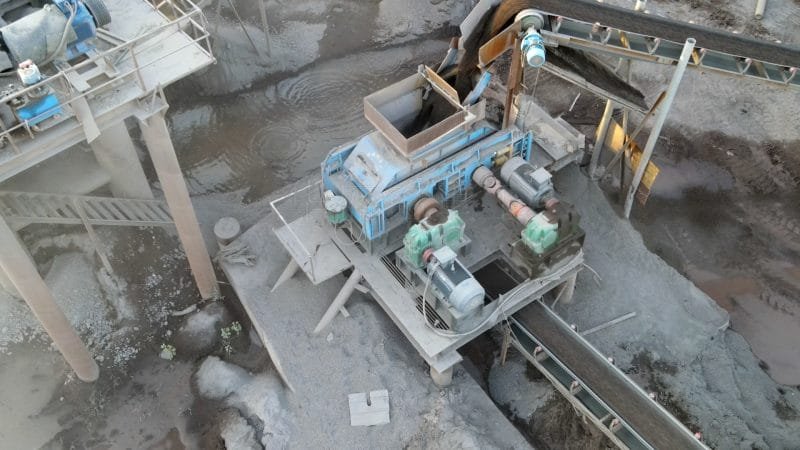Sand and gravel roller crusher (also known as double roller crusher, roller sand making machine) is a kind of core equipment through the two parallel rollers rotating in opposite direction to squeeze the material to achieve the medium and fine crushing operation, which is widely used in the fields of sand and gravel aggregate production, mining, building materials and so on. The following is an analysis of the core structure, performance characteristics and application selection:

Sand Crusher Machine
1. Core structure and working principle
Crushing Mechanism
The material falls into between two rollers from the upper inlet, and is crushed by the extrusion (50-200MPa high pressure) and shear force generated by the roller rotating in the opposite direction (usually adopting differential speed design). The roller gap is adjustable (hydraulic or wedge system), controlling the size of the discharged material within the range of 0.5-40mm.
Key Components
Roller: The surface is divided into smooth roller (fine crushing) and toothed roller (coarse crushing), adopting high manganese steel or alloy wear-resistant material, the roller skin of some models is thickened to 20cm, the service life is up to 3 years.
Driving system: dual motor belt drive, hydraulic model supports automatic gap adjustment and overload protection.
Auxiliary design: scraper device (to prevent wet material from sticking to the rollers), iron remover (to prevent metal foreign object damage).

Sand Roller Crusher Machine
2. Performance characteristics and technical advantages
High-efficiency crushing
The processing capacity covers 2-400 tonnes/hour, with large crushing ratio (usually 5-8), even finished product size and low over-crushing rate.
Compared with Jaw Crusher or Cone Crusher, the energy consumption is reduced by 20-30%, and the energy-saving effect is more significant when crushing wet materials.
Flexible control
By adjusting the roll spacing (e.g. 1-5mm fine-tuning), the finished product size can be precisely controlled to meet the different needs of construction aggregates, mechanism sand and so on.
Strong adaptability
Applicable materials include river pebbles, granite, limestone and other hard rocks, as well as gangue, construction waste and other waste materials, dry and wet materials can be processed.
Sticky materials with water content of 5%-50% need pretreatment to prevent clogging.
Intelligent environmental protection
Closed structure to reduce dust spillage, low noise design (<85dB).
CNC hydraulic model supports remote monitoring, automatic start/stop, and can be operated by one person.
3. Application Scenarios and Equipment Positioning
Role of sand and gravel production line
It is usually used as secondary or tertiary crushing equipment (after coarse crushing by jaw breaker) for medium and fine crushing and shaping to improve the quality of aggregate grain shape.
The finished products are suitable for high grade concrete, road base filling, block making, etc.
Industry Expansion
Cement plant (limestone crushing), coal processing plant (gangue processing), metallurgy (ore fine crushing) and other fields.
4. Summary of core advantages
Economy: simple structure, low maintenance cost (less wearing parts), long roller skin life.
Quality assurance: rounded grain shape and continuous grading of the finished product, enhancing the added value of sand and gravel.
Green production: in line with environmental protection policy, help sand plant green transformation.



